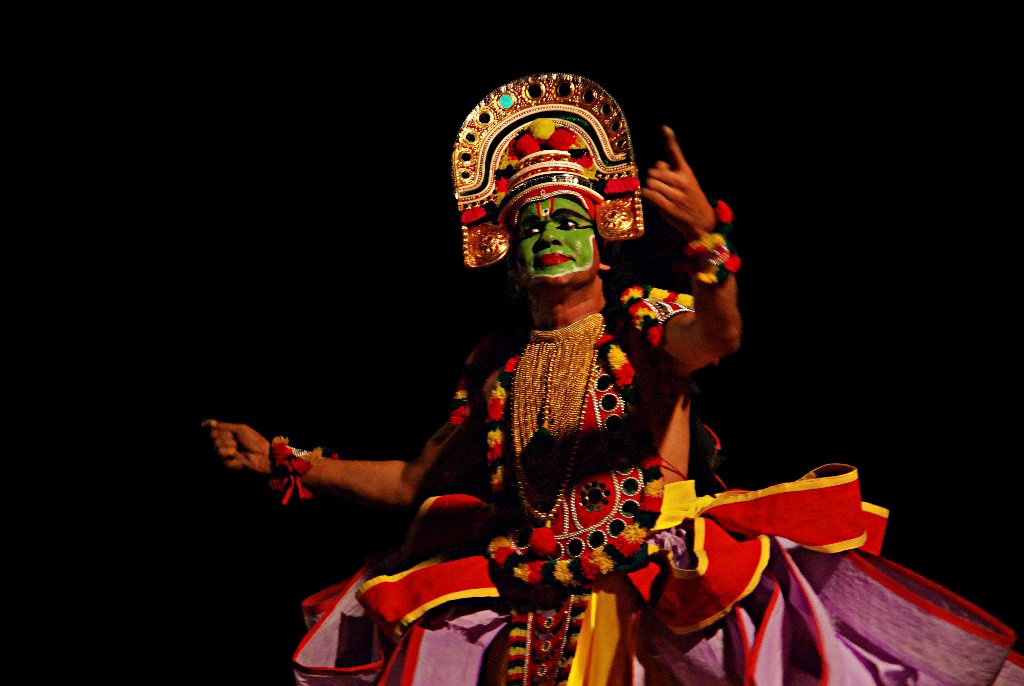Kerala, often referred to as “God’s Own Country,” is a land rich in culture and traditions. One of the most captivating and vibrant facets of Kerala’s cultural heritage is Ottan Thullal, a classical dance form that has been enchanting audiences for centuries. Ottan Thullal combines elements of dance, drama, and poetry to create a unique and delightful performance that reflects the essence of Kerala’s cultural diversity.
A Historical Perspective
Ottan Thullal owes its origin to the legendary Malayalam poet, Kunchan Nambiar, who lived during the 18th century. Kunchan Nambiar was not only a prolific poet but also a social critic who used humor and satire to comment on the prevalent societal issues of his time. Legend has it that Ottan Thullal was born out of a challenge he accepted to create a new art form that was more accessible to the common people than the highly stylized and rigidly structured Kutiyattam and Kathakali. The result was Ottan Thullal, which became an instant hit due to its simplicity, humor, and engaging storytelling.

Characteristics of Ottan Thullal
- Vibrant Costumes: Ottan Thullal performances are known for their colorful and eye-catching costumes. The main performer, known as the Ottan Thullal artist, wears a unique costume consisting of a green and red robe with distinctive headgear adorned with peacock feathers. The elaborate costume adds a visual appeal to the performance.
- Versatile Themes: Ottan Thullal is not limited to traditional mythological stories but covers a wide range of themes. The artist can choose stories from epics like the Ramayana and the Mahabharata or explore everyday situations, making it relatable to a diverse audience.
- Expressive Gestures: The dance movements in Ottan Thullal are characterized by graceful hand gestures (mudras) and expressive facial expressions. The artist uses these elements to convey emotions and narrate the story effectively.
- Humor and Satire: Humor is at the heart of Ottan Thullal. The performances are laced with witty commentary and satire, often poking fun at social norms and conventions. This element of humor sets Ottan Thullal apart from other classical dance forms.
- Lively Music: Ottan Thullal is accompanied by traditional percussion instruments like the mridangam and cymbals. The rhythmic beats and melodious tunes enhance the overall impact of the performance.
Significance of Ottan Thullal
Ottan Thullal holds a special place in Kerala’s cultural landscape for several reasons:
- Cultural Preservation: Ottan Thullal plays a vital role in preserving and promoting Kerala’s cultural heritage. It serves as a bridge between the past and the present, ensuring that traditional stories and art forms continue to thrive.
- Accessibility: Unlike some of the more elite classical dance forms, Ottan Thullal is accessible to a broader audience. Its humorous and relatable themes make it appealing to people from all walks of life.
- Social Commentary: Through humor and satire, Ottan Thullal has historically been a platform for social commentary. It has addressed issues such as caste discrimination, superstitions, and societal inequalities, sparking important conversations.
- Entertainment: Ottan Thullal is, above all, a form of entertainment. Its lively and engaging performances make it a popular choice for cultural events, festivals, and celebrations across Kerala.
Ottan Thullal is more than just a dance form; it’s a cultural treasure that has withstood the test of time. Rooted in the creative genius of Kunchan Nambiar, Ottan Thullal continues to captivate audiences with its vibrant costumes, expressive storytelling, and unique blend of humor and artistry. As Kerala’s cultural legacy, Ottan Thullal reminds us of the importance of preserving and celebrating our rich heritage.


